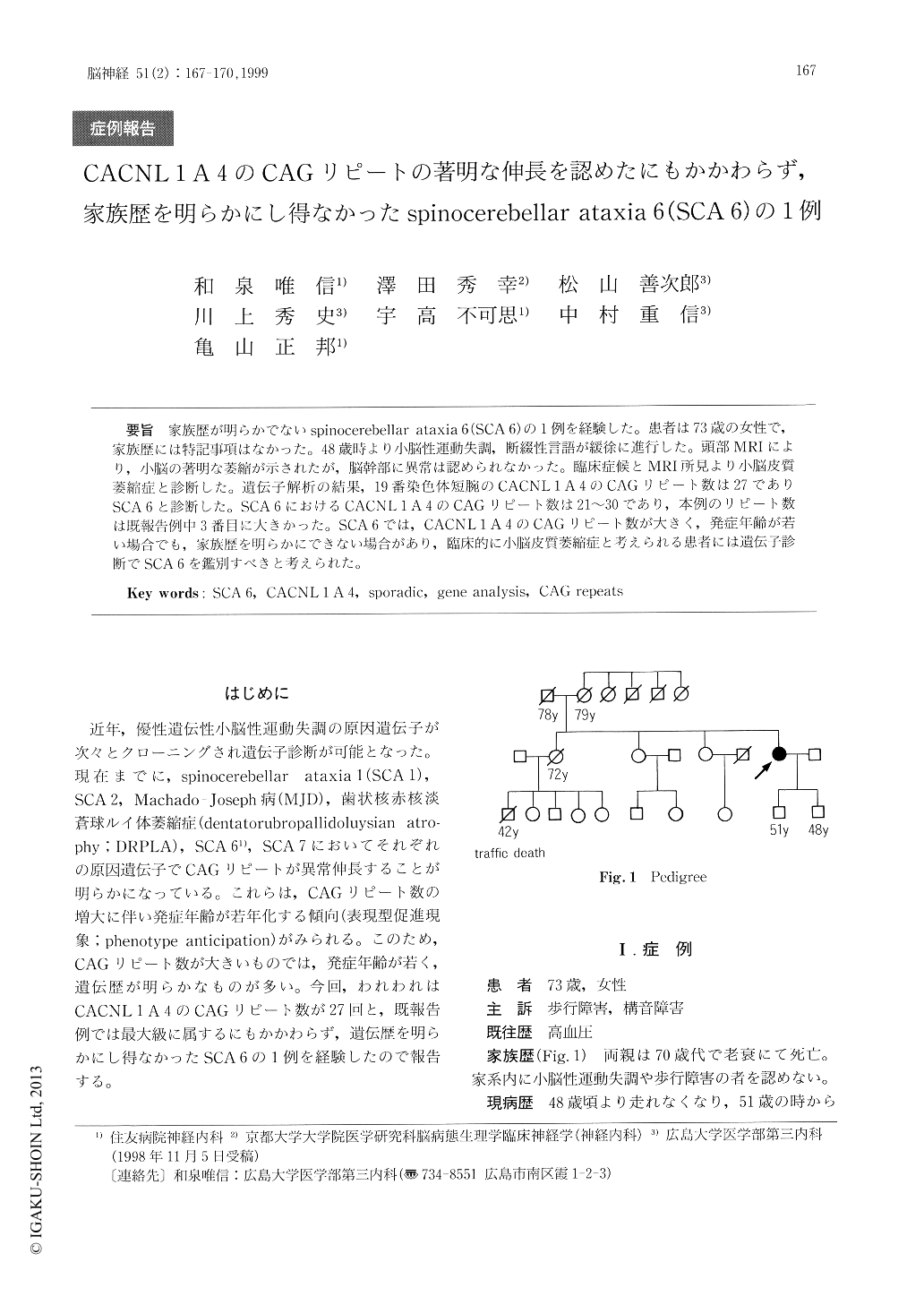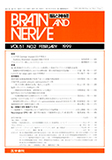Japanese
English
- 有料閲覧
- Abstract 文献概要
- 1ページ目 Look Inside
家族歴が明らかでないspinocerebellar ataxia 6(SCA6)の1例を経験した。患者は73歳の女性で,家族歴には特記事項はなかった。48歳時より小脳性運動失調,断綴性言語が緩徐に進行した。頭部MRIにより,小脳の著明な萎縮が示されたが,脳幹部に異常は認められなかった。臨床症候とMRI所見より小脳皮質萎縮症と診断した。遺伝子解析の結果,19番染色体短腕のCACNL1A4のCAGリピート数は27でありSCA6と診断した。SCA6におけるCACNL1A4のCAGリピート数は21〜30であり,本例のリピート数は既報告例中3番目に大きかった。SCA6では,CACNL1A4のCAGリピート数が大きく,発症年齢が若い場合でも,家族歴を明らかにできない場合があり,臨床的に小脳皮質萎縮症と考えられる患者には遺伝子診断でSCA6を鑑別すべきと考えられた。
We reported a 73-year-old woman of spinocer-ebellar ataxia 6 (SCA 6). There was no family history of neurological diseases. She demonstrated cerebellar ataxia and scanning speech at the age of 48 These symptoms gradually developed. Brain MRI showed severe cerebellar atrophy and no abnormality in the brain stem. Her neurolgical symptoms and MRI findings were compatible with cerebellocortical atrophy (CCA). Analysis of the CACNL1A4 gene on chromosome 19p 13 demon-strated she had an expanded allele with 27 CAG repeats. Therefore, she was diagnosed with SCA 6.

Copyright © 1999, Igaku-Shoin Ltd. All rights reserved.


